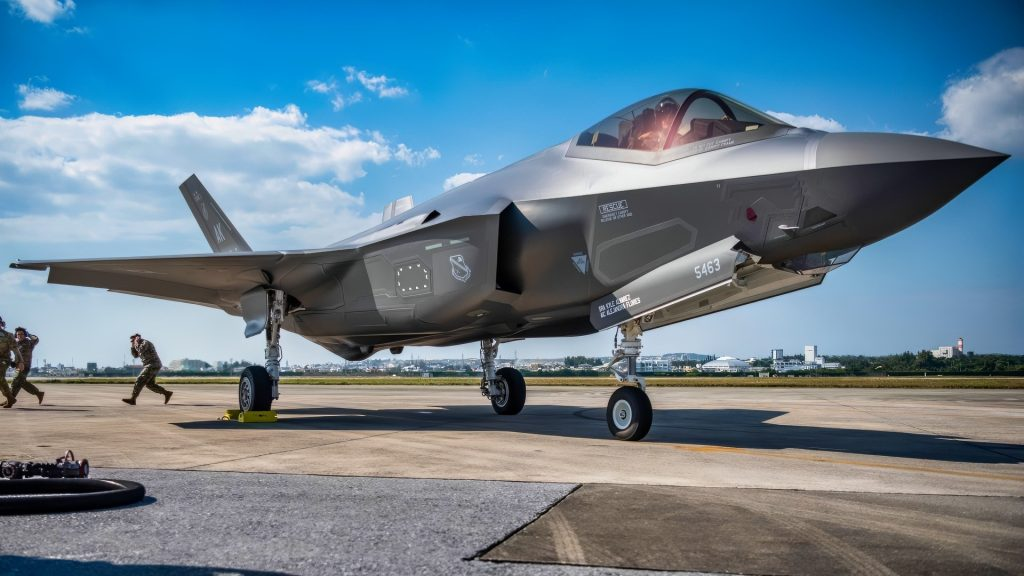
The F-35 Lightning II is one of the most important fighter aircraft in the modern era. It is not just an addition to the arsenal of America; it is how America and its allies intend to define air power for centuries to come. Blending stealth, accuracy, and unparalleled situational awareness, F-35 is not merely a fighter jet-it’s an international effort, a technological leap, and an economic driver connected to the very essence of defense.

Its origin was in the Joint Strike Fighter program, a magnificent concept to design a family of aircraft that the Air Force, Navy, and Marine Corps could all share and perform a variety of mission profiles. Lockheed Martin’s X-35 design was the winner, and three variants resulted: the F-35A for conventional takeoff and landing, the F-35B for short takeoff and vertical landing, and the F-35C specifically for carrier operations.

Each model has its own distinct advantages, but they share one overriding goal—piercing contested airspace, delivering on-target blows, and providing pilots with a level of battlefield awareness never before possible. Past air warriors could not get anywhere near integrating these capabilities.

It was a program that was multinational in conception. Some of the early partners included countries like the United Kingdom, Italy, Canada, the Netherlands, Denmark, Norway, and Australia, with Israel, Japan, and South Korea later coming on board as individual members. The outcome was thus an internationally designed and introduced fighter.

One of the benefits of the F-35 is growth potential. The plane was made to be able to upgrade in the future, and the current level of modernization—Block 4—brings new computers, enhanced sensor fusion, and additional weapons carriage with Technology Refresh 3 (TR-3). These improvements place the aircraft in the position to counter the new threats and extend its life far into the future.

Sustaining such a high-end platform is no small task. U.S. Air Force wings deployed at Hill, Luke, and Edwards Air Force Bases commit themselves to anything from everyday activities to rigorous testing. It’s their sweat that makes the jet not just take off in training missions but also in real missions.

Operations like Red Flag have illustrated how the F-35 combines air, land, and sea combat in ways older aircraft cannot. Its sensors provide commanders and pilots with a common situational awareness of the battlefield, a valuable edge underscored further as combat moves forward in the Middle East.

Of similar importance is the investment in training the next generation of pilots. Luke Air Force Base was a milestone in 2023 when it graduated its 1,000th F-35 pilot, and it speaks to both the size and intent of the program and to its pivotal role in determining the future direction of allied airpower.

The size of the program, however, has a price tag. Lifetime costs will be more than $2 trillion, with maintenance and sustainment accounting for the largest percentage. Even as an attempt has been made to optimize efficiency, cost is still one of the most contentious areas about the F-35.

Economically, the plane is colossal. Over 1,000 aircraft have been delivered and have contributed an estimated $72 billion each year to the United States economy. Up to 290,000 jobs are credited to the program, with well over 1,600 suppliers. There are not many defense programs in history that come close to the industrial scale of the F-35.

Technically, the plane is astounding. The F-35A employs a single Pratt & Whitney F135 engine, which generates 43,000 pounds of thrust, and it has a Mach 1.6 speed that can carry 18,000 pounds of ordnance. The naval variant F-35C is more stressful on the landing gear and more winged to counter the stresses of carrier takeoffs and landings. Both possess a cutting-edge suite of systems—AESA radar, the Distributed Aperture System, and the Electro-Optical Targeting System—that combine to provide pilots with an unmatched perspective of the battlespace. The aircraft will remain in service long into the 2070s, maintained by continuous upgrade, with an estimated flight time for its service life of 8,000 hours.

The F-35 will be the mainstay of allied air forces in the years to come as sixth-generation aircraft begin to trickle into the inventory. The issue will be balancing the resources to maintain today’s fleet while purchasing those needed for tomorrow’s technologies. What becomes certain is that the Lightning II has already remolded the future of combat aviation, and its impact will be seen for decades to come.
